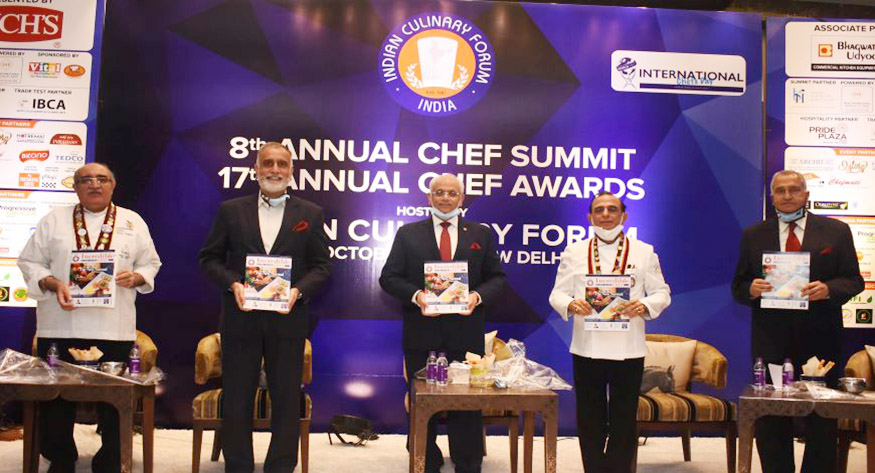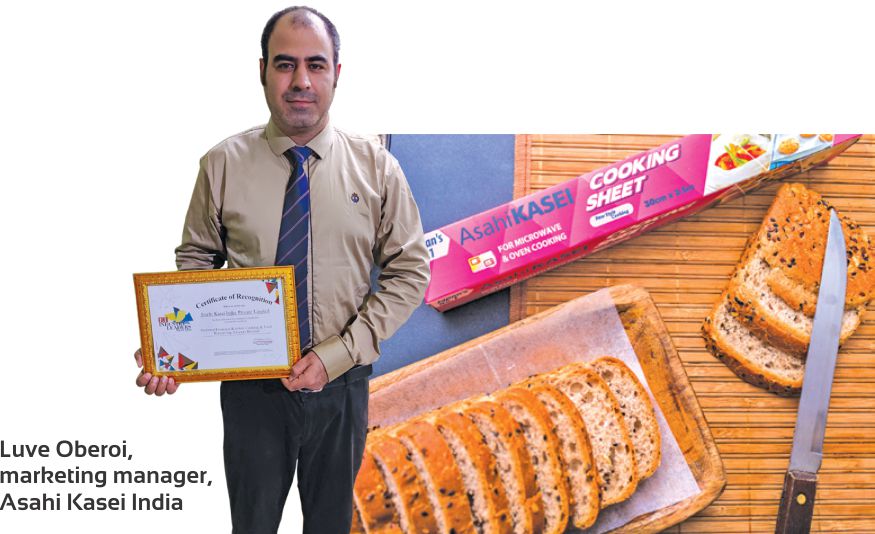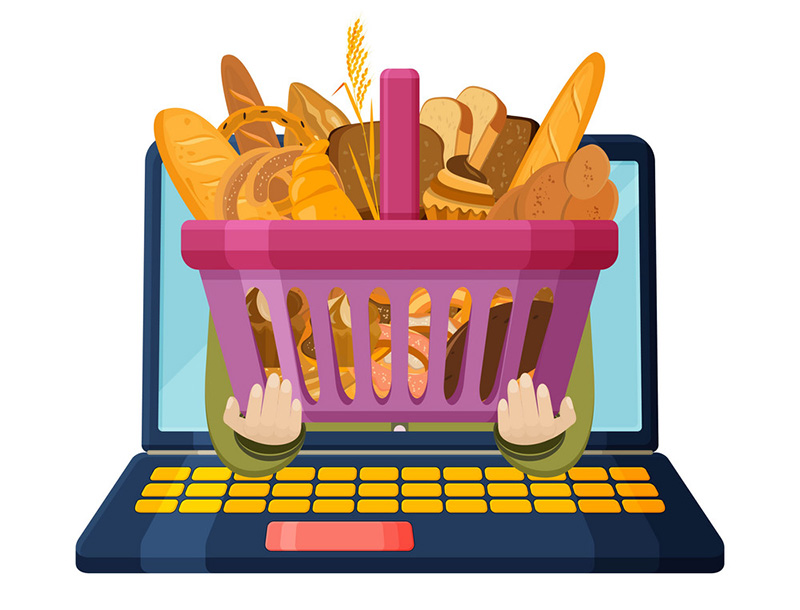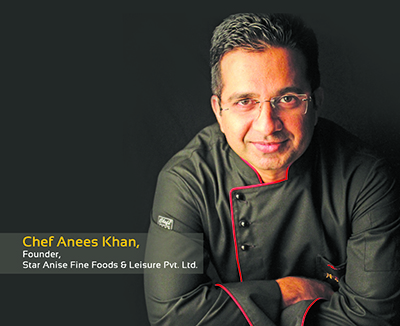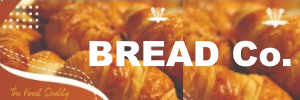Bakery Biz, January-February, 2021
As a student of the bakery industry for the last 20 years, Yusuf Patanwala shares his experiences on how the industry has transformed in terms of automation and what kind of ‘future and fortune’ it upholds. In the fifth of a series of six articles, he gives an insight into the aspect of Innovation and Innovative Thinking and explains how it is one the best ways to contribute towards humanity and why it makes great business sense too.

There’s a better way to do it – find it!
Who has said this and for whom have these words been a guide for the entire life? Any idea?
When asked by a journalist upon having failed at 10,000 experiments before coming up with the right product – he said “I have learned 9,999 things that won’t work!
Many of his inventions have been a result of repeated failures, but failures never frightened him. In fact, he became more wiser with every failed attempt.
What was the result of such an attitude and philosophy towards work? Well, this man had more than 2,000 patents to his credit when he breathed his last. His inventions are now part of our daily lives and he was named “The Person of the Millennium” for his immense contribution to mankind in the last 1,000 years!
Yes, I am talking about the extraordinary genius, inventor and successful businessman – Thomas Alva Edison!
We are here to discuss Innovation in this article – and there is no better person than Edison who personifies the qualities of an exceptional Innovator. While our last 4 articles have been about the nuts and bolts of Quality Management and Productivity, this 5th article will delve into the realm of Innovation and how it is one the best ways to contribute towards humanity and why it makes great business sense too!
Innovation is broadly defined as something that is ‘new’ and of some ‘value’.

YUSUF PATANWALA
FOUNDER AND CEO
AUTOBAKE PRODUCTIONS
That something can be a new product, a better way of doing things, a unique business model or an insightful strategy. This new and valuable something which we call as ‘innovation’ brings with it either one or all of the following benefits:
- Higher profits as a result of an innovative process that saved costs by means of reduction in labour, elimination of material wastes, better production lead times or reduction in defects due to poor quality.
- More sales due to an innovative attribute or feature added to the existing product that led to better taste, look, quality, nutrition, health benefit, stability, shelf life, etc.
- Stronger capabilities to execute high value projects due to innovation in business model by smart use of technology for efficiencies and insights into customer needs.
The Business Almanac is replete with stories of great innovations spanning the entire millennium. The more recent ones being from the house of Apple, Google, Microsoft, Tesla, Amazon, Uber, etc and many alike from the fields of medicine, food, space, defence, etc. Today the world is connected like never before and this is the result of some ground-breaking innovations from leading people and companies around the world
Coming closer, there have been many break-through innovations in the field of manufacturing over the last few decades. It started with the Assembly Line Concept developed by Henry Ford that ushered in a revolution in mass manufacturing and reduced the build-up time of a car from 12 hours to an astonishingly low of 93 minutes!!
Manufacturing as an industry has grown in strength ever since and many manufacturing companies are global powers in themselves due to many such innovations in this field. Total Quality Management, Lean Manufacturing, Just In Time, Six Sigma, Toyota Production System, Theory of Constraints, Kaizen, 5S, etc are just some of these innovations.
Let us explore just 2 of these innovations in this article and see how they have shaped the industry as it is today and derive lessons for our very own bakery sector.
The Assembly Line:
The assembly line is ‘driven’ on the foundation of division of labor (pioneered by FW Taylor in his seminal book – The Principles of Scientific Management). We divide the work into smaller units and assign one or several units of work to the worker best fit for the job They position themselves in a linear fashion and the product flows through the system from one worker to another. Raw/unfinished product enters the system from one end and exits from the other end complete, checked, inspected and packed, ready for delivery!
The beauty of the assembly line system can be encapsulated as follows:
- It is balanced: Every worker has even load and they finish their assigned activities all at the same time and the work station moves forward by means of a conveyor. Workers don’t move.
- It is lean: It occupies very little space, requires very few workers and is fastest way to produce any product or deliver any service.
- It is a single piece flow system: Unlike batch production methods where there used be huge in-process and finished goods inventories, the single piece flow system eliminates the work in process inventory completely while minimising the other
Our company Autobake has been very fortunate to have worked with many bakeries in India in implementing this innovative concept. Bakeries have reported huge jumps in productivity and quality as a result of the above. Our earlier articles have also described the application of Assembly Line concept in much detail.
Lean Manufacturing:
In simple words it means – to work relentlessly in pursuit of elimination of ‘waste’ from the complete manufacturing system! The definition of ‘waste’ here is also of critical importance. Any product attribute or a service or a process activity that ‘does not add value’ from the point of view of the customer is a ‘waste’.
For example, we see many bakeries offering a wide range of beautiful birthday cakes and pastries and in many flavours like pineapple, butterscotch, etc. However, one thing we may notice is many a times the same variety is offered in many shapes like square, round and heart shaped too! Does this attribute of varying shapes of the same product help in more sales? better revenues? More customers? We need to look at it and minimise such variations immediately.
Now look at a different product like a cream roll, filled muffin or a cream donut. How many times have we noticed the same product being offered in multiple and endless flavours like vanilla, chocolate, strawberry, butter scotch and many more? Endless variety of khari and rusk. We need to re-look and question the benefit of such an exercise.
Talking about wastes, we need to look at them in our manufacturing facilities with different eyes or lenses.
Define the value that you offer to the customer and find innovative means to fulfil them. This will help get rid of many a wastes that are happening in front of our eyes and yet we are unable to recognise them.

To help you get started – look out for the below 7 manifestations of waste in your facility:
1. Transportation: Look out for workers moving in all directions inside the bakery. How many times they leave the work stations? and why? Can you reduce the frequency? How far from their work stations are they moving? Can you reduce the distance? How much time are they spending outside their work station? Can you reduce it?
2. Inventory: Look out for excess work-in-process (WIP) material first. How much of it is staying in the system, how many points in the process and for how much time? Try to make it ZERO !. Yes, it can be done. Then look out for the finished goods inventories – not only at your factory level but also at the distributor level, stockist level, shop level too!! MINIMIZE it!
3. Motion: Look out for unnecessary and useless motions of the worker and operator. There are tools like Work and Motion Study available for this task. Observe and record your findings. You will be amazed. How many times he / she has to bend in an hour? Can you eliminate this?
4. Over Production: Look out for all areas right from raw material stores to final distribution departments ordering, producing or stocking extra goods as a ‘buffer’ for uncertainty in the production planning system. You will be amazed how sound planning helps bring down this ‘buffer’ substantially.
5. Over Processing: Look out for activities of ‘over-doing’ something. I have seen workers putting unnecessarily more cream into cakes or garnishes or fillings etc with an intention that its good for quality. Need to re-look and redefine what is good quality here.
6. Waiting: Look out for workers waiting to work! I have seen many workers come on time to their work stations only to find out that their work place is not yet ready or clean, the work order for the day is not yet ready, the materials for production have still not been issued by stores, etc. If 6 people are waiting for 10 minutes – it is a loss of 1 manhour. Imagine how many times they may have had to wait in one shift of 8 hours?
7. Defect: Finally look out for defects. Design the system and inculcate a habit of doing things right the first time. Rework, inspection, etc is always way too costly. All the above aspects have a great potential for innovation in your manufacturing facility – Just remember these golden words: There is a better way to do it – Find it!!


